Environment and Ecology - 3 | Current Affairs & Hindu Analysis: Daily, Weekly & Monthly - UPSC PDF Download
Greenhushing and its Implications
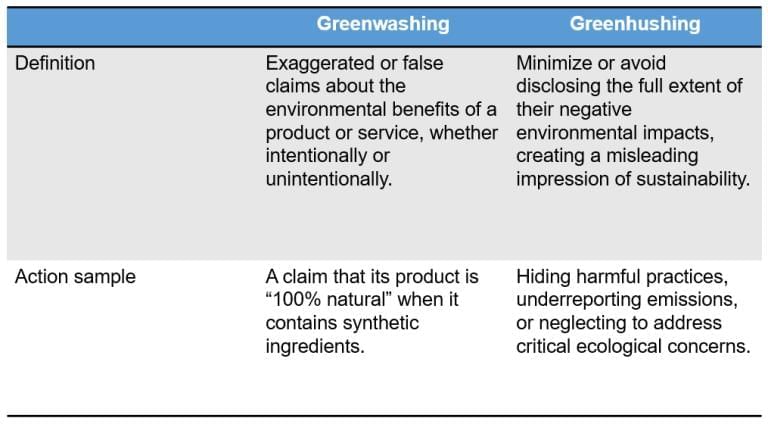 Why in News?
Why in News?
Recently, there has been a notable rise in carbon-neutral certified firms globally. However, many of these companies opt not to publicize their environmental accomplishments, leading to a widespread phenomenon known as greenhushing. This trend is often driven by an altruistic approach and a desire to maintain social relevance.
Key Takeaways
- Greenhushing refers to the practice of underreporting or strategically withholding information about a firm's environmental goals and achievements.
- Businesses may avoid discussing their sustainability initiatives due to various concerns, including legal risks and backlash against ESG efforts.
Additional Details
- What is Greenhushing: It involves firms not advertising their green credentials or remaining silent about their future commitments to sustainability.
- Litigation Concerns: In the US, public companies risk lawsuits if they appear to prioritize sustainability over shareholder profits, discouraging open discussions about environmental initiatives.
- Backlash Against ESG: Some firms in conservative states refrain from discussing sustainability goals to avoid political scrutiny.
- Quality Perceptions: Many consumers associate green products with lower quality or higher prices, leading companies to hesitate in promoting their environmental benefits.
- Avoiding Commitments: Firms may choose silence to evade pressure for ambitious sustainability goals.
- Customer Comfort: Businesses in tourism might avoid emphasizing environmental efforts so as not to disturb customers seeking an escape from climate-related issues.
- Greenwashing Accusations: To mitigate reputational damage from potential accusations of misleading environmental claims, companies may choose not to disclose their achievements.
- Lack of Demand: If consumers are unaware of carbon neutrality or do not prioritize it in their purchasing decisions, companies may be less inclined to advertise their efforts.
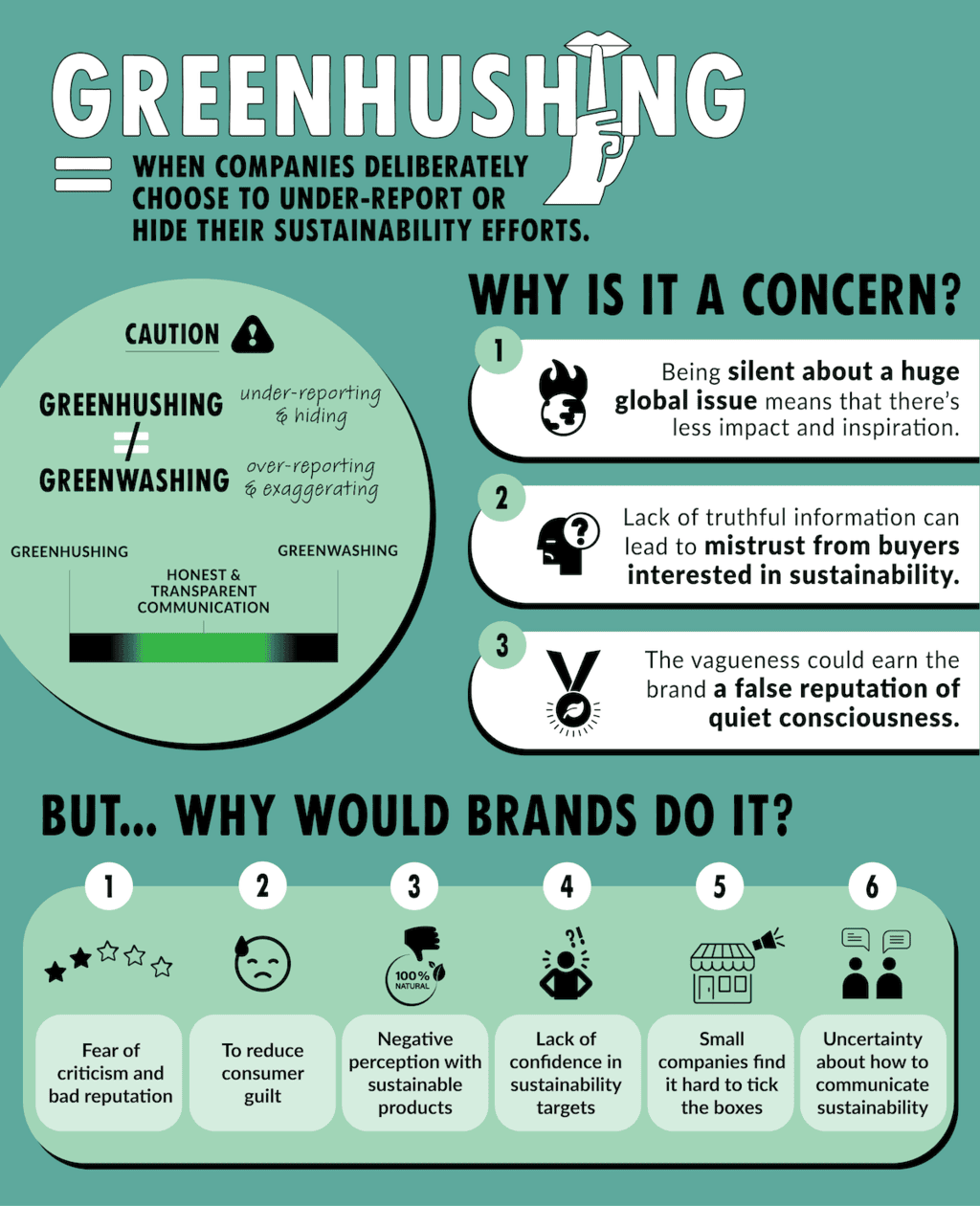
Concerns with Greenhushing
- Rising Global Trend: A report from climate consultancy South Pole indicates that 58% of companies are reducing climate communication due to heightened regulation and scrutiny.
- Reduced Transparency: Lack of open communication hinders the assessment of progress in reducing carbon emissions, limiting the ability to track and verify climate action.
- Slowing Sustainability Transition: Withholding information on environmental efforts could delay the adoption of sustainable practices, undermining global efforts against climate change.
- Domino Effect: Fear of backlash may deter businesses from adopting sustainable practices, further perpetuating the cycle of greenhushing.
- Consumer Impact: Silence about sustainability achievements may result in consumers continuing to choose less sustainable products, inadvertently slowing demand for eco-friendly alternatives.
Addressing Greenhushing
- Highlighting Sustainability: Companies should present environmental sustainability as an ongoing journey, engaging audiences to emphasize their continuous improvement efforts.
- Stronger Regulations: Implementing clearer regulations can enhance trust and create a level playing field, such as the EU's Greenwashing directive that bans misleading advertisements.
- Consumer Education: Increasing awareness about sustainability can help shift negative perceptions regarding green products, encouraging consumers to support more sustainable companies.
In conclusion, addressing greenhushing is crucial for promoting transparency in sustainability reporting and enhancing corporate responsibility towards environmental stewardship.
Salt Pans Land
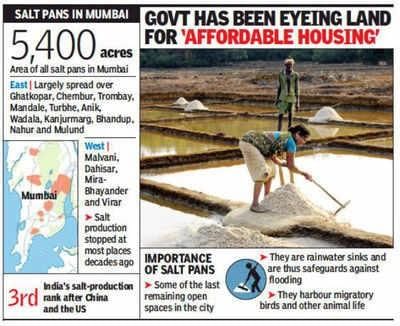 Why in News?
Why in News?
Recently, the Indian government approved the transfer of 256 acres of salt pan land in Mumbai to the Dharavi Redevelopment Project Pvt Ltd (DRPPL). This initiative aims to construct rental housing for slum dwellers, but it has raised ecological concerns among environmentalists regarding the impact of construction on these sensitive areas.
Key Takeaways
- The government is transferring land designated as salt pans for housing development.
- Environmentalists are concerned about the ecological implications of building on salt pan lands.
Additional Details
- What are Salt Pan Lands? Salt pans are low-lying areas that periodically receive seawater, leaving behind salt and mineral deposits. This natural process is vital for maintaining coastal ecosystem balance.
- Protection Status: According to the CRZ Notification of 2011, these ecologically sensitive areas are categorized under CRZ-1B, which restricts economic activities to salt extraction and natural gas exploration.
- Salt Pans in India: In Mumbai, approximately 5,378 acres are classified as salt pan lands. Nationally, around 60,000 acres are identified, with significant distributions in states like Maharashtra, Andhra Pradesh, Tamil Nadu, Odisha, Gujarat, and Karnataka. Andhra Pradesh has the largest area at 20,716 acres, followed by Tamil Nadu (17,095 acres) and Maharashtra (12,662 acres).
Salt pans serve not only as ecological buffers but also have economic significance, providing employment opportunities in harvesting and processing salt. They are essential for various industries, including chemical production and agriculture. Additionally, some salt pans have become tourist attractions, contributing to ecotourism and cultural tourism.
Discrepancy in Satellite Data on Farm Fires and Air Pollution Explained
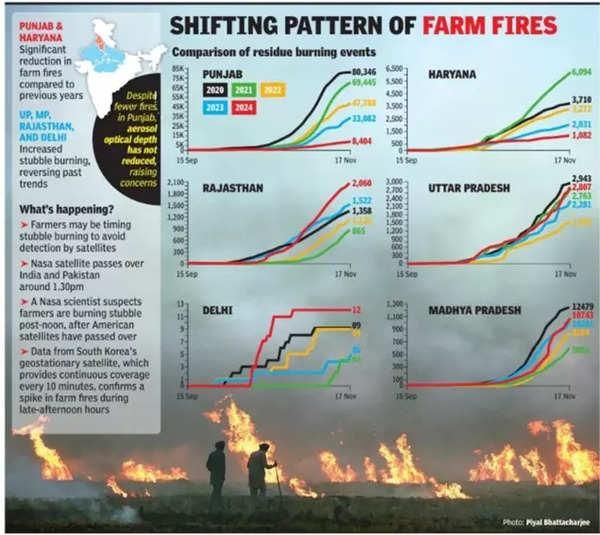 Why in News?
Why in News?
The air quality in Delhi continues to be severely affected following Deepavali, despite rigorous measures like GRAP Stage IV, Supreme Court interventions, and the Delhi government's initiatives. This situation has brought significant attention to farm fires in neighboring states, where farmers burn paddy stubble in preparation for wheat sowing. Although these fires are not the sole contributors to Delhi's pollution, they have sparked controversy regarding their actual extent and impact.
Key Takeaways
- Satellite monitoring is essential for tracking the prevalence of farm fires.
- NASA's Aqua and Suomi-NPP satellites are primarily used for this purpose.
- Recent data indicates a significant reduction in farm fires, yet air pollution levels remain high.
Additional Details
- Monitoring of Farm Fires: The effectiveness of satellite monitoring is highlighted through the use of NASA's Aqua, launched in 2002 with MODIS, and Suomi-NPP, launched in 2011 with VIIRS. These satellites gather data during specific overpass times, crucial for tracking fire activity.
- Operational Details: Aqua and Suomi-NPP pass over regions at 1:30 PM and 1:30 AM, collecting images that can detect fires. However, they may miss fires occurring outside these times, particularly late in the day.
- NASA Observations: A senior NASA scientist reported a 40% decrease in farm fires for 2023, indicating potential success in anti-burning campaigns. However, he suggested that farmers may time their burning activities to avoid detection by satellites.
- Investigation Using Additional Data: By comparing data from Aqua and Suomi-NPP with South Korea's GEO-KOMPSAT 2A, which provides continuous monitoring, it was found that there is a higher concentration of smoke detected after NASA's satellite passes, pointing to possible late-day stubble burning.
- Contradictions in Data: Despite fewer detected fires, aerosol levels in the atmosphere have remained similar to previous years, indicating a need for ground-level verification to align satellite data with actual burning practices.
- Role of CAQM: The Commission for Air Quality Management (CAQM) is responsible for addressing air quality issues. However, reports suggest that they may have been aware of farmers' tactics to evade detection after satellite overpasses while maintaining that farm fires have decreased.
- Limitations of Satellite Technology: Current Indian satellites, like INSAT-3DR, have inadequate resolution for precise fire detection. Recent assessments are underway to explore alternative satellites for better monitoring.
In conclusion, the discrepancies between satellite data on farm fires and actual air pollution levels point to a complex relationship influenced by timing of agricultural practices and limitations in satellite monitoring technology. Continued efforts are needed for accurate tracking and effective policy implementation to address air quality concerns.
UNFCCC COP29 Baku
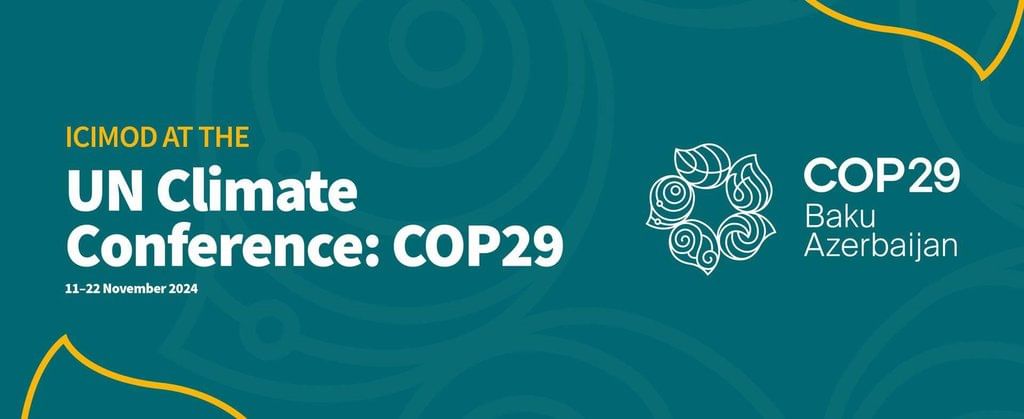 Why in News?
Why in News?
Recently, the United Nations Framework Convention on Climate Change (UNFCCC) Conference of the Parties 29 (COP29) concluded in Baku, Azerbaijan. This conference saw around 200 countries negotiate agreements aimed at addressing global climate challenges.
Key Takeaways
- New Climate Finance Goal: COP29 established the New Collective Quantified Goal on Climate Finance (NCQG), aiming to triple climate finance for developing countries to USD 300 billion per year by 2035.
- Carbon Markets Agreement: A significant agreement was reached to finalize mechanisms for carbon markets, allowing country-to-country trading of carbon credits.
- Declaration on Reducing Methane: Over 30 countries endorsed a declaration targeting methane emissions from organic waste, which contributes to 20% of global methane emissions.
- Indigenous Peoples and Local Communities: COP29 reinforced the role of Indigenous Peoples in climate action with the adoption of the Baku Workplan.
- Gender and Climate Change: The Lima Work Programme on Gender was extended for another 10 years, emphasizing gender equality in climate actions.
- Baku Harmoniya Climate Initiative for Farmers: Launched to support farmers by consolidating existing climate initiatives in agriculture.
Additional Details
- New Climate Finance Goal: The goal aims to increase climate financing from all sources to USD 1.3 trillion per year by 2035, emphasizing the responsibility of developed nations.
- Carbon Markets Agreement: This includes bilateral agreements (Article 6.2) for trading carbon credits and establishing a centralized carbon market (Article 6.4) under the UN.
- Methane Emissions: The declaration encourages countries to include specific targets for reducing methane emissions from organic waste in their Nationally Determined Contributions (NDCs).
- Indigenous Peoples’ Participation: The Baku Workplan aims to integrate indigenous knowledge with modern science and enhance participation in climate dialogues.
- Gender Action Plan: A new gender action plan is expected to be adopted at COP30, reflecting the ongoing commitment to gender-responsive climate policies.
- Baku Harmoniya Initiative: Aims to streamline support for farmers, making it easier to access climate finance and resources.
India's stance at COP29 reflected its commitment to climate justice, advocating for increased financial support for developing nations. This aligns with its climate goals and emphasizes the need for developed countries to fulfill their commitments.
Avian Botulism
Why in News?
Avian botulism is a significant health threat to bird populations, caused by a toxin produced by the bacterium Clostridium botulinum. This condition leads to paralysis and can be fatal for affected birds. The bacteria's spores are commonly found in wetland sediments across various habitats, including those occupied by invertebrates like insects and mollusks, as well as healthy birds.
Key Takeaways
- Avian botulism is linked to toxins from Clostridium botulinum, specifically types C and E.
- Environmental factors such as high water temperatures and low oxygen levels promote toxin production.
- Bird populations can suffer greatly, especially in wetlands where these conditions are prevalent.
Additional Details
- Sambar Lake: This is the largest saltwater lake in India, located in the districts of Nagaur and Jaipur in Rajasthan. Covering over 200 sq.km., it is surrounded by the Aravalli hills and is fed by two major ephemeral streams, Mendha and Runpangarh. The lake was designated a Ramsar site in 1990, highlighting its ecological importance.
- During the winter months, numerous migrating birds frequent the lake, making it a critical habitat for avian species.
Understanding avian botulism is crucial for conservation efforts and protecting bird populations, particularly in vulnerable ecosystems like Sambar Lake.
Carbon Credit Mechanism
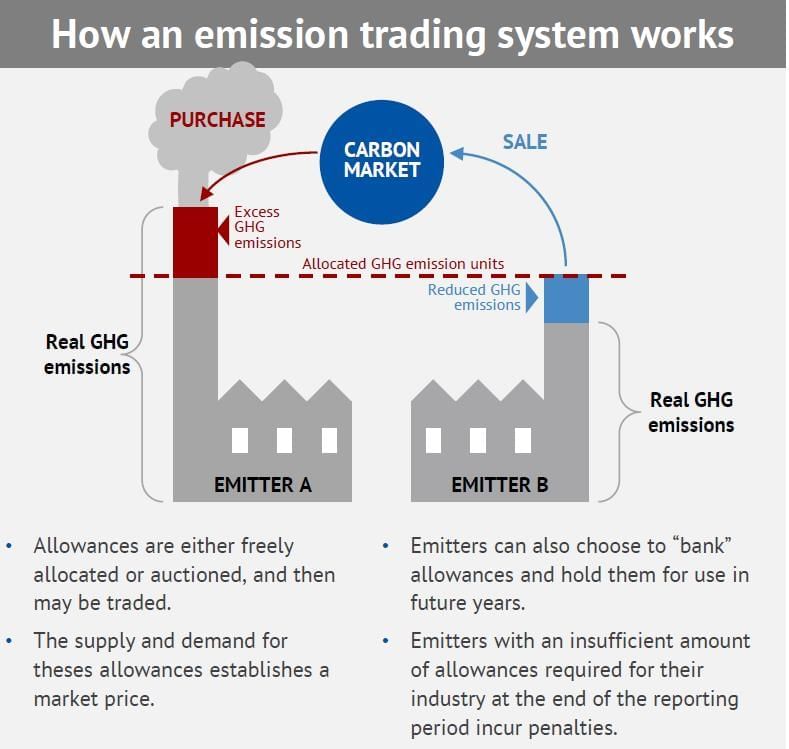 Why in News?
Why in News?
The carbon credit mechanism is increasingly relevant as countries strive to meet their emissions reduction commitments under international agreements. It plays a crucial role in incentivizing emission reductions and promoting sustainable practices globally.
Key Takeaways
- A carbon credit allows the holder to emit one tonne of carbon dioxide (CO2) or its equivalent in other greenhouse gases (GHGs).
- Credits are generated through projects that either reduce emissions or enhance carbon sequestration.
- There are two primary markets for carbon credits: compliance markets and voluntary markets.
Additional Details
- What is a Carbon Credit?A carbon credit is a permit that enables the emission of one tonne of CO2 or an equivalent amount of another GHG. These credits are produced through various initiatives, such as:
- Renewable energy projects (e.g., solar, wind)
- Energy efficiency improvements
- Reforestation and afforestation projects
- Methane capture from landfills
- How the Carbon Credit Mechanism Works: Governments set emission caps, allowing organizations that emit less to sell their surplus credits, while those exceeding limits must purchase credits.
- Types of Carbon Credit Markets:
- Compliance Market: Operates under legally binding frameworks like the Kyoto Protocol.
- Voluntary Market: Allows voluntary purchase of credits for CSR goals or personal commitments.
- Benefits:
- Environmental Impact: Promotes cleaner technologies and sustainable practices.
- Economic Incentives: Encourages innovation in emission reduction projects.
- Flexibility: Offers cost-effective compliance options for industries.
- Global Collaboration: Facilitates international cooperation on climate action.
- Challenges:
- Verification and Accountability: Ensuring the authenticity of carbon credits is complex.
- Market Volatility: Fluctuating prices can destabilize the market.
- Greenwashing: Misuse of credits by companies to enhance their environmental image without real action.
- Inequitable Access: Developing countries may struggle to generate credits.
- Carbon Credits in the Indian Context:
- India's renewable energy initiatives, like solar and wind projects, align with carbon credit generation.
- Programs such as the National Afforestation Programme contribute to emission offsets.
- Indian companies can export surplus credits, generating additional revenue.
- Government policies, such as the Perform, Achieve, and Trade (PAT) scheme, support energy efficiency and carbon asset creation.
Recent studies highlight concerns regarding the effectiveness of carbon trading mechanisms in achieving real emissions reductions, suggesting that many credits do not correspond to actual reductions. Recommendations for improving the system emphasize the need for stricter eligibility criteria and improved methodologies for quantifying emissions reductions. As new frameworks are developed under the Paris Agreement, ongoing global discussions aim to enhance the integrity and effectiveness of carbon markets.
India’s E-Waste Management
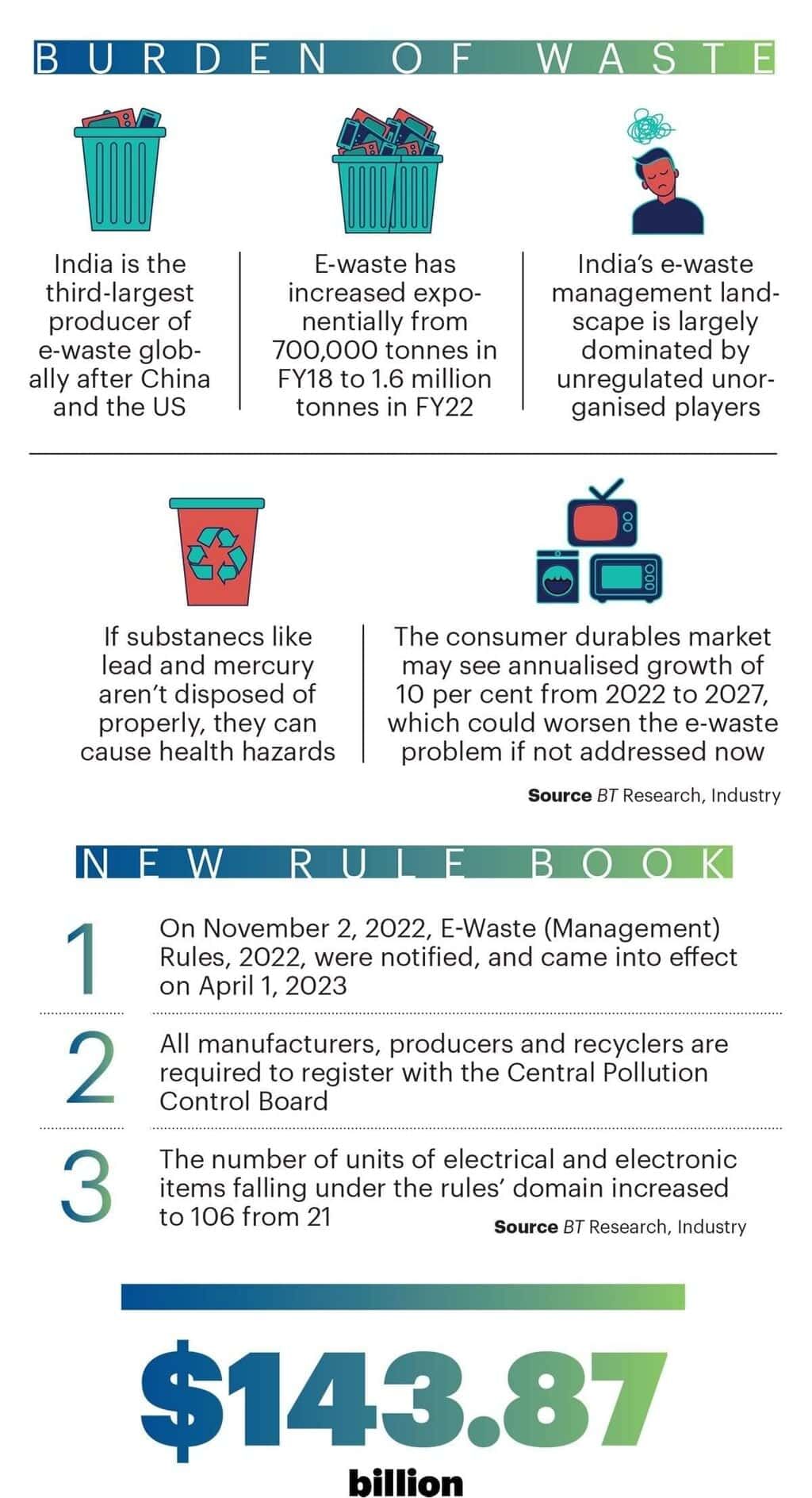 Why in News?
Why in News?
Recently, the Minister of State for the Union Ministry of Housing and Urban Affairs provided data reflecting the increasing use of electronic and electrical devices across the country.
Key Takeaways
- India has experienced a 72.54% rise in e-waste generation over five years.
- Approximately 57% of e-waste remains untreated annually in India.
- India is the third-largest e-waste generator globally, following China and the US.
Additional Details
- Volume Growth: E-waste generation rose from 1.01 million metric tonnes (MT) in 2019-20 to 1.751 million MT in 2023-24.
- Over 60% of e-waste is generated by 65 cities, while 10 states contribute to 70% of total e-waste.
- Recycling Gaps: Only 43% of e-waste was recycled in 2023-24, an increase from 22% in 2019-20.
- Informal sectors handle the majority of e-waste, lacking necessary environmental safeguards.
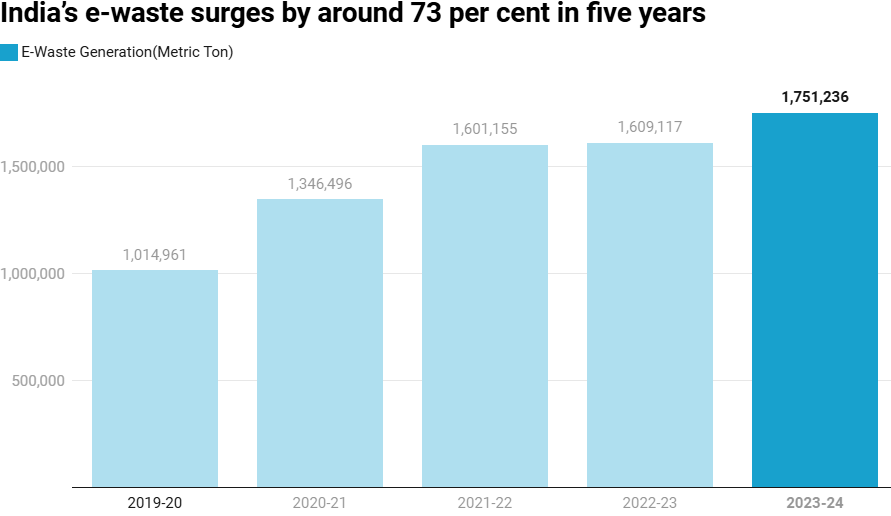
National and International Conventions Related to E-Waste Management
- International:
- Basel Convention on the Control of Transboundary Movements of Hazardous Wastes and Their Disposal (1989).
- Bamako Convention (1991): Prohibits the import of hazardous waste into Africa.
- Minamata Convention on Mercury (2013) ratified in 2018.
- Stockholm Convention on Persistent Organic Pollutants (POPs) (2001) implemented through domestic laws.
- National:
- E-Waste (Management) Rules, 2022 focusing on Extended Producer Responsibility (EPR) and proper recycling.
- Hazardous and Other Wastes (Management and Transboundary Movement) Rules, 2016.
- National Action Plan for Chemical and Waste Management reflecting commitments to international conventions.
Common E-Waste Disposal Methods in India
- Landfilling: Involves burying e-waste in pits, posing risks of hazardous substances leaching into soil and groundwater.
- Incineration: Controlled burning of e-waste reduces waste volume but can release harmful substances.
- Dismantling: Recovery of valuable materials while safely disposing of toxic components, such as metals and plastics.
Issues and Challenges in E-Waste Management
- Informal E-Waste Recycling: Hazardous methods release toxic fumes and contaminate the environment.
- Lack of Infrastructure: Insufficient collection points and recycling facilities lead to improper disposal.
- Lack of Awareness: Consumers and businesses often are unaware of proper disposal methods, leading to improper practices.
Environmental Effects of E-Waste
- E-waste contains toxic materials that can contaminate water, soil, and air, affecting wildlife.
- Improper disposal leads to groundwater contamination, air pollution, and soil degradation.
Strategies to Strengthen E-Waste Management in India
- Integration of Informal Sector: Incorporate informal waste handlers into formal systems to improve collection rates.
- Technological Advancements: Promote research in advanced recycling technologies and AI-based solutions for tracking e-waste.
- Learning from Global Practices: Implement stringent recycling targets and eco-design incentives similar to EU initiatives.
- Refurbishing and Reuse Programs: Encourage refurbishing used electronics to extend their lifecycle.
- Public Awareness and Education: Conduct campaigns on e-waste hazards and proper disposal methods.
- Collaboration with International Bodies: Partner with organizations like the International Telecommunication Union (ITU) for capacity building.
In conclusion, effective e-waste management in India requires a multi-faceted approach involving regulation, awareness, and integration of various sectors to ensure environmental sustainability and public health.
|
38 videos|5293 docs|1118 tests
|
















